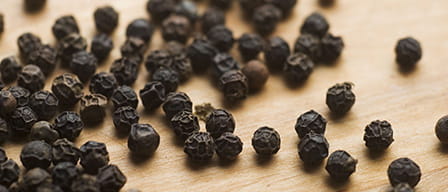
Black Pepper
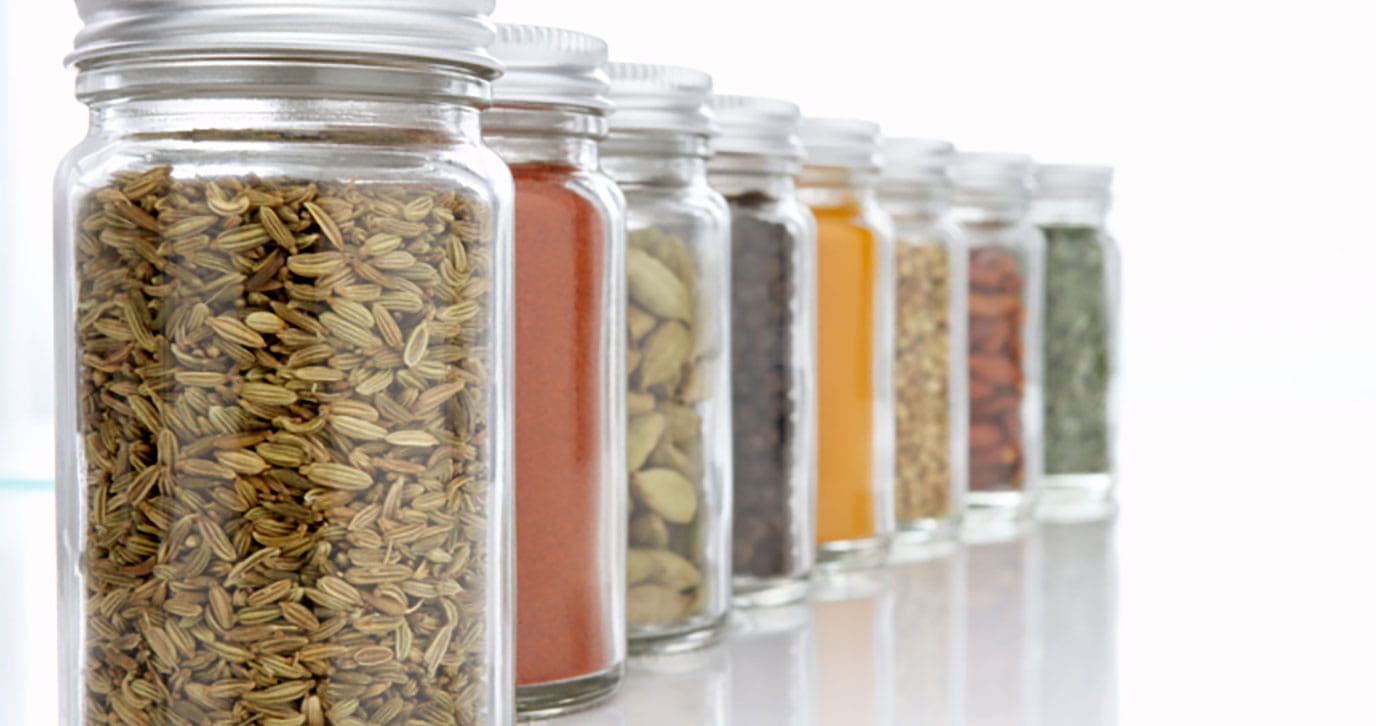
"Herbs are the friends of physicians and the praise of cooks"
- Emperor Charlemagne (AD 742-814)
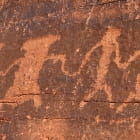
Abundant anecdotal information documents the historical use of herbs and spices for their health benefits (1). Beginning 6 million years ago, early man co-evolved with the flowering plants in the world around him (2). Early documentation suggests that hunters and gatherers wrapped meat in the leaves of bushes, accidentally discovering that this process enhanced the taste of the meat, as did certain nuts, seeds, berries, and bark. Over the years, spices and herbs were used for medicinal purposes. They were also used as a way to mask unpleasant tastes and odors of food, and later, to keep food fresh (3). Ancient civilizations did not distinguish between those spices and herbs used for flavoring from those used for medicinal purposes. When leaves, seeds, roots, or gums had a pleasant taste or agreeable odor, they became in demand and gradually became a norm for that culture as a flavor enhancer.
From the dawn of biblical times (17th century BC), spices were prized for a wide variety of uses including religious offerings, burial rituals, medicines, trade, and seasoning. Spices are mentioned numerous times throughout the Bible. In the Song of Solomon, several culinary spices are mentioned including cinnamon and saffron (2). In 1000 BC, Queen Sheba visited King Solomon in Jerusalem and offered him "120 measures of gold, many spices, and precious stones" (2 Chronicles 9:9). The people of Israel described manna bread as being “white like coriander seeds” (Exodus 16:31). The New Testament refers to a religious tithing of “a tenth of your spices - mint, dill, and cumin” (Matthew 23:23) and spices were described as anointing the body of Jesus (Mark 16:1).
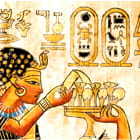
A summary of ancient Egyptian medical practices, the Ebers Papryus (1500 BC), cited medical treatments consisting of caraway, coriander, fennel, garlic, mint, onion, peppermint, poppy, and onion (4). Onion and garlic were of particular importance. Laborers who constructed the Great Pyramid of Cheops consumed onion and garlic to promote health as well as stamina and garlic cloves were found in the tomb of King Tutankhamen. Some ancient Egyptians even placed wooden figures of garlic cloves in their tombs to ensure a tasty and wholesome afterlife. The Egyptians also enjoyed flavoring their food with cardamom and cinnamon which they sourced from Ethiopia (3).
According to ancient myths, Shen Nung likely wrote Pen Ts’ao Ching (The Classic Herbal) around 2700 BC. The early publication mentioned more than a hundred medicinal plants including the spice cassia, which is similar to cinnamon (called “kwei”). A later, more comprehensive Chinese herbal, Pen Ts’ao Kang Mu was published in 1596 BC by Li Shih Chen. Other historical evidence suggested that cassia was an important spice in South China when the province Kweilin, meaning "Cassia Forest", was founded around 216 BC.
Early on, nutmeg and cloves from Moluccas were brought to China. Anecdotal evidence suggests that Chinese courtiers in the 3rd century BC carried cloves in their mouths so their breath was sweet when addressing the emperor. During the 5th century AD, ginger plants were grown in pots and carried on long sea voyages between China and Southeast Asia to provide fresh food and to prevent scurvy.
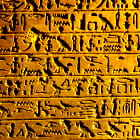
Ancient cuneiform records noted spice and herb use in Mesopotamia in the fertile Tigris and Euphrates valleys, where many aromatic plants were known. Sumerian clay tablets of medical literature dating from the 3rd millennium BC mention various odoriferous plants, including thyme. A scroll of cuneiform writing, established by King Ashurbanipal of Assyria (668-633 BC), records a long list of aromatic plants, such as thyme, sesame, cardamom, turmeric, saffron, poppy, garlic, cumin, anise, coriander, silphium, dill, and myrrh. The ancient Assyrians also used sesame as a vegetable oil.
King Merodach-Baladan II (721-710 BC) of Babylonia grew 64 different species of plants in his royal garden. He kept records on how to cultivate many spices and herbs such as cardamom, coriander, garlic, thyme, saffron, and turmeric. The religion of Babylonia involved an ancient medical god of the moon, who controlled medicinal plants. Potent parts of herbs were not allowed sun exposure and were harvested by moonlight.
Onions, garlic, and shallots became popular condiments in Persia by the 6th century BC. Records from King Cyrus (559-529 BC) noted a wholesale purchase of 395,000 bunches of garlic. Persians also produced essential oils from roses, lilies, coriander, and saffron.
Spices and herbs such as black pepper, cinnamon, turmeric, and cardamom have been used by Indians for thousands of years for both culinary and health purposes. Spices indigenous to India (such as cardamom and turmeric) were cultivated as early as the 8th century BC in the gardens of Babylon (2).
Sushruta, an ancient surgeon (around 4th century BC), used white mustard and other aromatic plants in bed sheets to ward off malignant spirits. He also applied a poultice from sesame to postoperative wounds which may have acted as an antiseptic.
Medical writings of Charaka (1st century) and Sushruta II (2nd century) referenced spices and herbs. Sushruta II also used spices and herbs such as cinnamon, cardamom, ginger, turmeric, and pepper for healing purposes. Spices such as cardamom, ginger, black pepper, cumin, and mustard seed were included in ancient herbal medicines for different types of health benefits. In Ayurvedic medicine, spices such as cloves and cardamom were wrapped in betel-nut leaves and chewed after meals to increase the flow of saliva and aid digestion.

Ancient Greeks imported Eastern spices (such as pepper, cassia, cinnamon, and ginger) to the Mediterranean area. They also consumed many spices produced in neighboring countries. Examples include caraway and poppy seeds for bread, fennel for vinegar sauces, coriander as a condiment in food and wine, and mint as a flavoring in meat sauces. Garlic was widely used by the country people in much of their cooking. Ancient Greeks wore parsley and marjoram as a crown at their feasts in an attempt to prevent drunkenness.
Spices and herbs played an important role in ancient Greek medical science. Hippocrates (460-377 BC), wrote about spices and herbs, including saffron, cinnamon, thyme, coriander, mint, and marjoram. He noted that great care should be given to the preparation of herbs for medical use. Of the 400 herbal remedies utilized by Hippocrates, at least half are in use today. Roughly 500 years later, Theophrastus (372-287 BC), sometimes called the "Father of Botany," wrote 2 books that summarized the knowledge of over 600 spices and herbs.
The Greek Physician Dioscorides (AD 40–90), wrote De Materia Medica, which was used for botany and medicinal knowledge in both the East and the West for over 1500 years. The remedies were based on an extensive catalogue of spices and herbs and were more systematic than his predecessors who based their remedies on magic and superstition.
The Romans were extravagant users of spices and herbs. Spice-flavored wines were used in ancient Rome and spice-scented balms and oils were popular for use after the bath. Since spices were considered to have health properties, they were also used in poultices and healing plasters.
When the Roman Empire extended to the northern side of the Alps, the Goths, Vandals, and Huns of those regions were introduced to pepper and other spices from the East. These cultures were familiar with caraway, onions, rosemary, and thyme and gradually became attracted to the Eastern spices.
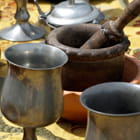
In the early part of the middle ages (before the Crusades), Asian spices in Europe were costly and mainly used by the wealthy. A pound of saffron cost the same as a horse; a pound of ginger, as much as a sheep; 2 pounds of mace as much as a cow. A Germanic price table of AD 1393 lists a pound of nutmeg as worth 7 fat oxen.
Black pepper, as well as other spices and herbs, was commonly used as a monetary source. Eastern Europeans paid 10 pounds of pepper in order to gain access to trading with London merchants. Throughout Europe, individual peppercorns were accepted as currency to pay taxes, tolls and rents (partly because of a coin shortage). Many European towns kept their accounts in pepper. Wealthy brides received pepper as a dowry and some landlords would get paid in “peppercorn rent” (2).
With the coming of the Crusades (AD 1095-1492), international exchange of goods became common. Gradually, Asian spices such as pepper, nutmeg, cloves, and cardamom became less expensive and more widely available. Spices were used to camouflage bad flavors and odors, and for their health benefits. Spiced wines were also popular.
European apothecaries used Asian spices (such as ginger, pepper, nutmeg, cinnamon, saffron, and cardamom) as well as garden herbs in their remedies and elixirs. The remedies were largely based on Arabian medical teaching.
An important person in developing and growing local herbs was the King of France and Emperor of the West, Charlemagne (AD 742-814). He was the first leader to have farmers plant an abundance of culinary herbs such as anise, fennel, fenugreek, and sage, thyme, parsley, and coriander.
European cultivation of spices and herbs was largely controlled by the church during this period. Religious spice and herb feasts were common. Some ancient customs and superstitions (such as tying bundles of herbs to stable doors to keep the witches out) were also continued.
In AD 1180, King Henry II founded a "pepperer’s guild" of wholesale merchants, which was a predecessor to the modern day grocery store. The guild included spice trade management, which included cleaning and preparing the spices for sale. The original spicers and pepperers helped launch the apothecaries and later became medical practitioners. Some common medical practices included placing sponges soaked with cinnamon and clove extracts under patients noses, sterilizing rooms with sage smoke, and prescribing saffron, garlic soup, and juniper wine for health benefits.

Marco Polo mentioned spices frequently in his travel memoirs (around AD 1298). He described the flavor of the sesame oil of Afghanistan and the plants of ginger and cassia of Kain-du (the city of Peking), where people drank a flavorful wine of rice and spices. He reported that the wealthy in Karazan ate meat pickled in salt and flavored with spices, while the poor had to be content with hash steeped in garlic. He mentioned that in Hangchow, 10,000 pounds of pepper were brought into that heavily populated city every day. Polo also described vast plantings of pepper, nutmeg, cloves, and other valuable spices he had seen growing in Java and in the islands of the China Sea, and the abundance of cinnamon, pepper, and ginger on the Malabar Coast of India. Some anecdotal evidence suggests that Polo’s accounts led to an increased international spice trade during the 13th and early 14th centuries.
The ancient Mesoamerican civilizations enjoyed a rich heritage of spice and herb usage and many spices popular today were only introduced to the outside world after the European discovery of America. When Christopher Columbus set out on his second voyage (AD 1493), he brought along Spanish physician Diego Chanca, who introduced capsaicin (red pepper) and allspice to Spanish cuisine. Vanilla is another spice that is native to Mexico. It was an Aztec tradition to drink chocolate beverages with a dash of vanilla. To this day, vanilla is a common ingredient in many chocolate beverages and candies. The Badianus Manuscript (AD 1552) is the oldest herbal text from the Americas and it includes ancient Mesoamerican prescriptions for a variety of afflictions (5).
King Manual I of Portugal had a large influence on bringing spices to his country. Several sea voyages helped establish a trade route to India. By AD 1501, via the port of Lisbon, Portugal had large quantities of Indian spices such as cinnamon, cassia, ginger, pepper, nutmeg, mace, and cloves. The King sent trade missions to develop new markets for his spices throughout Europe, especially in Germany. As the spice wealth poured into Lisbon, the Portuguese crown monopolized the lucrative but risky pepper trade. Cargoes of East Indian vessels were sold at high prices by the King of Portugal to large European syndicates. As in medieval times, the price of pepper served as a barometer for European business in general.

European spices were part of the food staples brought to the American colonies by early settlers. Colonists soon began incorporating indigenous spices and herbs as well. Jamestown, Virginia founder Captain John Smith (AD 1580-1631) wrote about spices, such as sassafras and onions, employed for medicinal purposes by the Native Americans (6). American colonists incorporated Sassafras as a main flavor component for root beer and it is also used in Creole cuisine (7).
After the Boston Tea Party (AD 1773), tea drinking became unpatriotic in Colonial America and spices and herbs were used to replace traditional tea. Sassafras bark, chamomile flowers, spearmint leaves, lemon balm leaves, raspberry leaves, loosestrife, goldenrod, dittany, blackberry leaves sage, and many others were often used as a beverage (8).
Toward the end of the 18th century, the United States entered the world spice trade. The British taxes and trade restrictions of colonial days no longer obstructed American commerce. They traded American salmon, codfish, tobacco, snuff, flour, soap, candles, butter, cheese, and beef, for spices such as pepper, cassia, cloves, cinnamon, and ginger.
Salem, Massachusetts enjoyed a flourishing Sumatra pepper trade and profited immensely from taxation and sales (AD 1797-1846). Most of the enormous quantities of pepper were re-exported to European ports (Stockholm, Gothenburg, Hamburg, Copenhagen, and Antwerp) or were transferred to Philadelphia, Boston, and Baltimore for processing and distribution by other American merchants and exporters. The largest single cargo on record for one of the Salem pepper fleet was of just over 1 million pounds (500 tons) of pepper, brought from Sumatra to Salem in 1806 by the Eliza, a sailing ship of 512 tons. After 1846, an overproduction of spices brought a gradual decline in its economic importance until the final demise of the Salem pepper trade following the outbreak of the Civil War in 1861 (AD 1861-1865).
War rations for American Civil War Union soldiers included cinnamon, ginger, nutmeg, and pepper. One of the most unusual uses for spices was conceived during the war. A letter found in the United States Library of Congress indicates that ground red and black peppers could be tied to a kite in a releasable bag to find its way into the eyes and noses of the Confederate Army. It should be noted that no one knows if this experiment was actually tried (8).
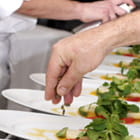
Unlike earlier times when monopolies dominated the spice trade, commerce in spices is now relatively decentralized. Throughout the world, spices and herbs are frequently used in cuisine, to improve flavor, and to provide new tastes. Spices can be found everywhere, including outer space: in 1982, spices were incorporated into astronaut food for the United States space shuttle program (9).
The information age (mid-20th century) has ushered in a new age of global cuisine sharing. Curious home cooks increasingly prepare meals from a wide range of ethnic heritages using an increasing array of spices. The United States Department of Agriculture (USDA) reports that the consumption of spices in the US has climbed exponentially over the course of the last half-century, and spices such as ginger and chili pepper are being used more frequently than ever before (10).
There is also a renewed interest in the health benefits of spices and herbs. Data from 2015 indicates that 5-10% of adults in the United States use botanical supplements such as spices, for health benefits (11). The 2020-2025 US Dietary Guidelines for Americans states that “Spices and herbs can help flavor foods when reducing added sugars, saturated fat, and sodium, and they also can add to the enjoyment of nutrient-dense foods, dishes, and meals that reflect specific cultures” (12).
One of the most promising developments for spices in modern times is that scientific evidence is accumulating that supports the anecdotal health benefits touted by our ancestors. Research shows that culinary spices and herbs may have beneficial effects in areas such as heart health, cognition, and weight management as well as improving diet quality by making healthier foods more acceptable to consumers. The body of scientific evidence is ever expanding to support the wisdom of our ancestors throughout the ages.
